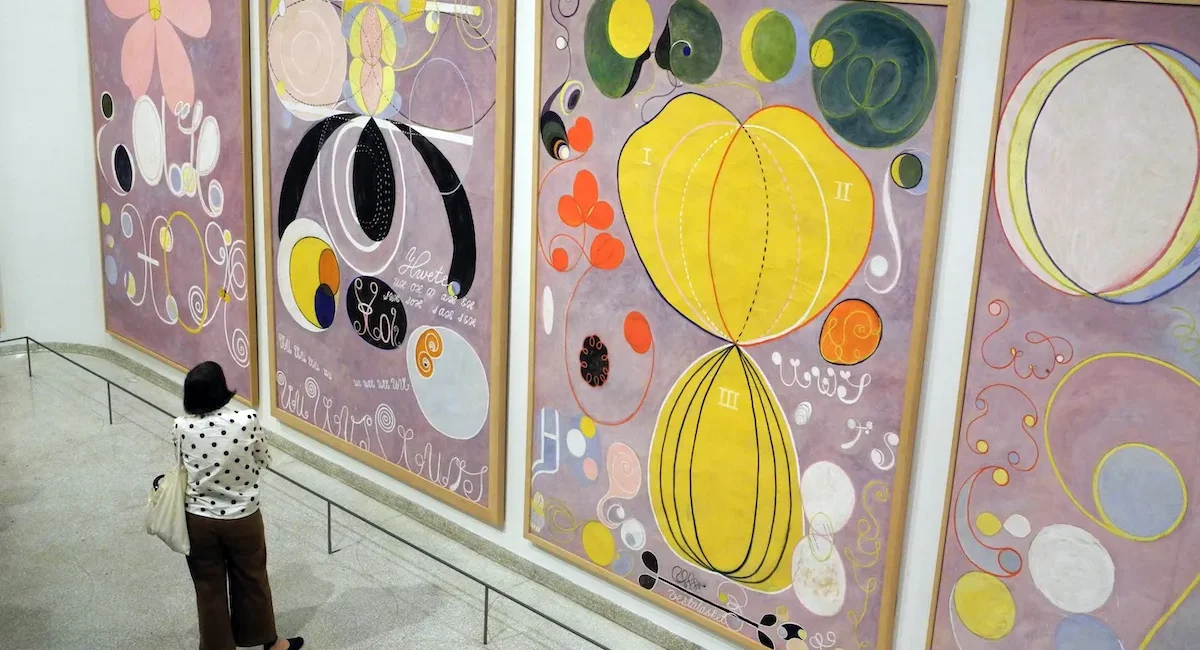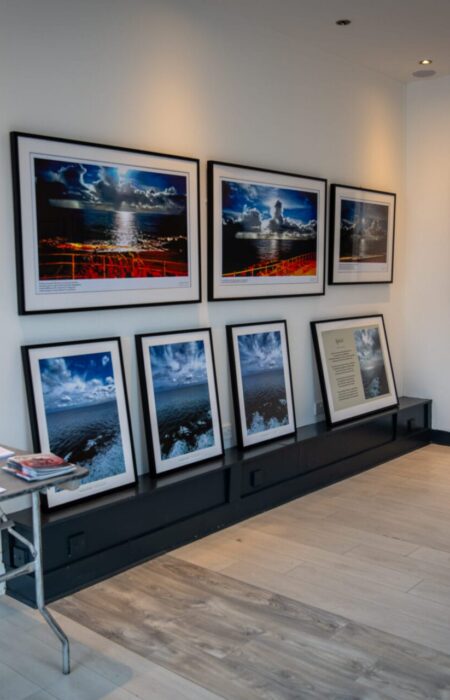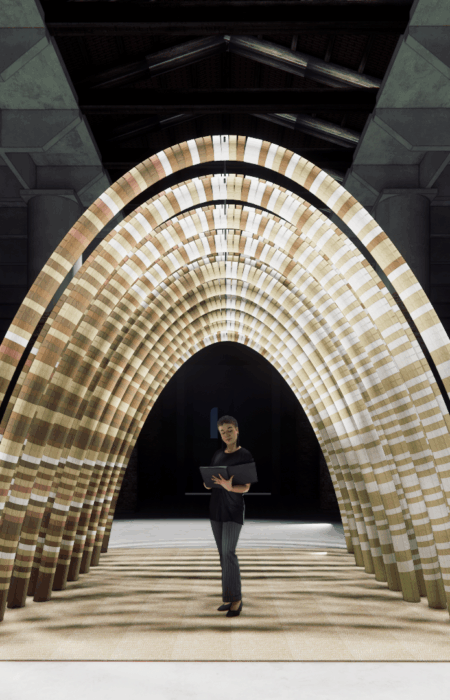Hilma af Klint, the Swedish painter known for her mystical and abstract works, has become a cultural icon in recent years, thanks to widespread retrospectives, biopics, and merchandise. However, there was a time when her work was largely overlooked by the art world. In fact, there was even an attempt during af Klint’s lifetime to create a museum for her works, but it ultimately failed to materialize due to her own hesitations.
In 1940, af Klint deepened her relationship with Swedish Symbolist artist Tyra Kleen, who proposed a collaboration. By 1943, Kleen suggested creating a museum dedicated solely to af Klint’s work in the town of Sigtuna, Sweden. This museum would focus exclusively on af Klint’s mystical and abstract paintings, many of which explore themes like the spiritual and occult. However, af Klint did not fully understand or accept Kleen’s proposal, fearing that the Lutheran Church’s sponsorship of the project might pose issues, especially since her work was more aligned with Anthroposophy, not Protestantism. Consequently, the Sigtuna museum never came to fruition.
Fast forward 82 years, and there still isn’t a dedicated museum for af Klint’s works. Despite this, her work continues to captivate audiences worldwide, as evidenced by recent retrospectives like the one held at the Guggenheim Bilbao in Spain. However, her descendants seem to be pushing back against the widespread display and celebration of her art. Erik af Klint, the artist’s great-grandnephew and the chairman of the Hilma af Klint Foundation, expressed concerns in a recent interview with Dagens Nyheter. He suggested that exhibitions like the one at the Guggenheim Bilbao may soon cease, stating that “When a religion ends up in a museum, it is dead,” implying that af Klint’s work was never intended to be displayed publicly in this manner.
Erik af Klint’s comments highlight a growing tension between preserving his great-grand-aunt’s legacy in the public sphere and the desire to keep her work more private, possibly due to its deeply personal and spiritual nature. This desire for exclusivity stands in contrast to the global interest in af Klint’s art, which has become highly influential in contemporary art circles.
The conversation surrounding af Klint’s art and legacy raises important questions about access, ownership, and the ethics of displaying art. While the artist’s work is undeniably significant and continues to resonate with modern audiences, the decision about how and where it should be exhibited is still very much in flux—especially when it comes to the opinions of her descendants.
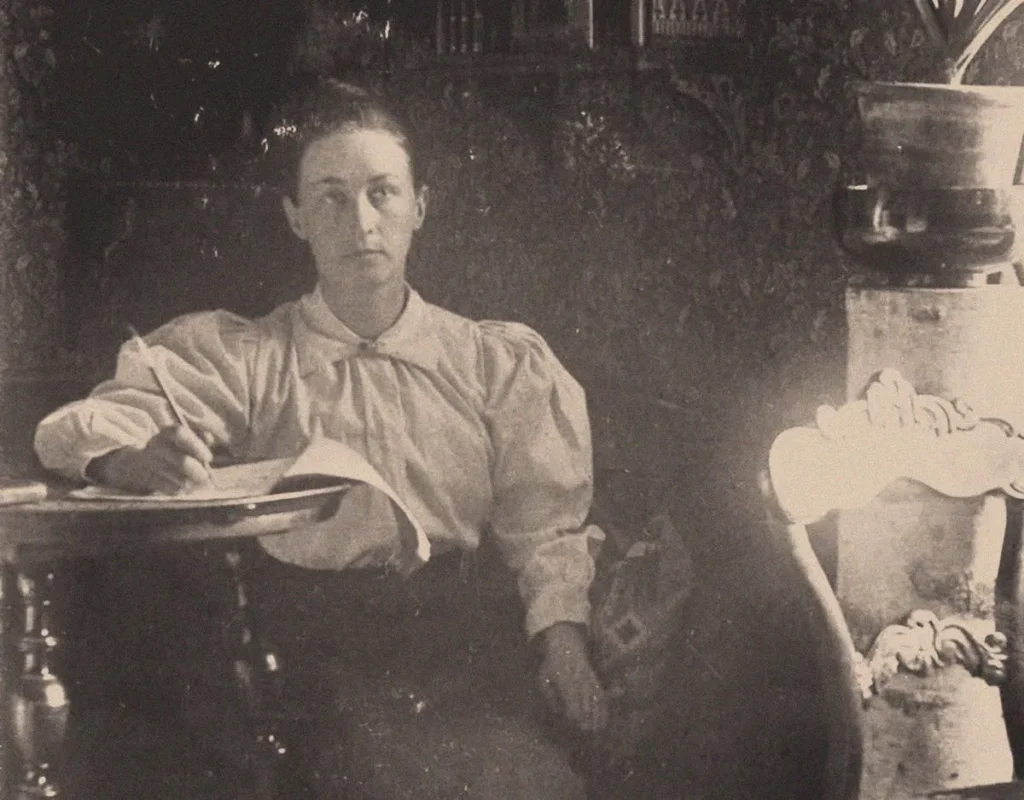
Erik af Klint, the great-grandnephew of Hilma af Klint, has expressed strong views about how his ancestor’s art should be treated in the modern world. He believes that af Klint’s work, deeply tied to spiritual themes and her personal experiences with the spirit world, should only be accessible to “spiritual seekers” who are truly prepared to engage with her messages. According to Erik, her art is a “message from the spirit world,” and exhibiting it in major museums would strip it of its sacred and private nature. His perspective suggests that only those with a specific, spiritual intent should be allowed access to her works, which could drastically limit public access.
However, art historian Julia Voss, who is considered the foremost expert on af Klint, challenges Erik’s view. She argues that the notion of a “spiritual seeker” is vague and problematic and cautions that such a move would spark significant protests. Voss, who has spent years studying af Klint’s life and art, believes that the artist herself never intended her works to be confined to a niche audience, and the current trend of showcasing her art in major institutions like the Guggenheim and Moderna Museet has helped secure her rightful place in the Western art canon.
Af Klint’s inclusion in these institutions has been critical in recognizing her as a pioneering abstractionist, on par with the likes of Pablo Picasso and Kazimir Malevich, two modernist titans who had long overshadowed her in art history. To exclude af Klint from such platforms again, as Erik suggests, would be a significant regression for her legacy and would undo the progress made to properly situate her within the broader history of modern art.
The situation becomes even more complicated when considering the financial and institutional challenges surrounding af Klint’s art. Erik has previously sought to limit who can buy or sell af Klint’s paintings, arguing that she never created them for the art market. This stance has led to a scarcity of her works in public collections. In 2021, when David Zwirner gallery exhibited af Klint’s 1913–15 “Tree of Knowledge” series, it was an unprecedented event. Glenstone, the private museum of collectors Mitchell and Emily Wei Rales, purchased the entire series, marking the first time a U.S. institution acquired her work.
Despite these successes, the Hilma af Klint Foundation, led by Erik, has clashed with the gallery and other art institutions over the commercialization of her art. Board members resigned from the foundation in 2023 due to the tension surrounding its handling of af Klint’s legacy. David Zwirner, the renowned gallery, has publicly criticized Erik and his approach, claiming that his actions are against the best interests of the artist.
This tension explains why many major museums, including the Guggenheim and the Museum of Modern Art (MoMA), have been slow to acquire af Klint’s work. While the Guggenheim had no af Klint pieces in its collection until a 2018 retrospective, MoMA made a significant acquisition in 2022, securing 47 of her watercolors. These pieces will be showcased at MoMA starting this May, marking a significant moment for the recognition of af Klint in the art world.
However, Erik’s stance on limiting access to af Klint’s work threatens to undo these achievements. If his desires are realized, her art could once again be hidden from public view, relegating her to obscurity and potentially stalling the progress made in her rightful recognition. The ongoing debate over af Klint’s legacy highlights a larger tension between artistic ownership, public access, and the commercial interests that often shape the art world. For many, the hope is that af Klint’s groundbreaking contributions will continue to be celebrated in museums and galleries worldwide, ensuring her place in the broader narrative of modern art.
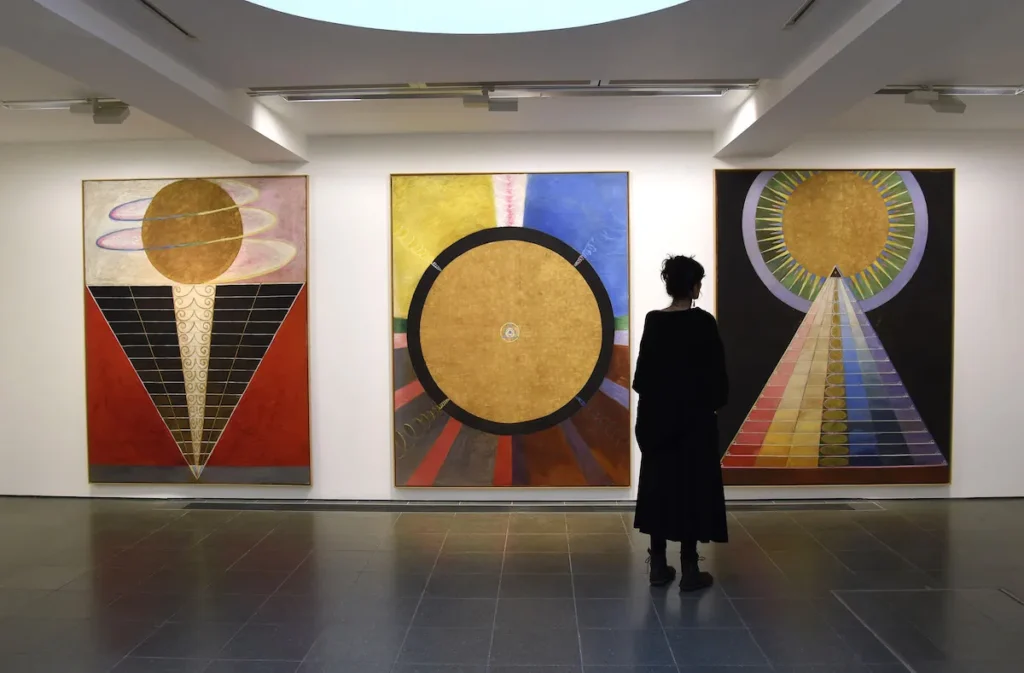
The debate over Hilma af Klint’s legacy and the accessibility of her work is becoming more contentious, particularly with the views expressed by Erik af Klint, her great-grandnephew. His desire to create a space that resembles a “temple” for her artwork seems rooted in the idea that af Klint’s creations are deeply spiritual, linked to the artist’s own mysticism and her connection with the spirit world. Erik has suggested that only “spiritual seekers” should be allowed to access her work, which raises concerns about exclusivity and limiting the broader public’s engagement with her art.
However, this approach could inadvertently block a vast number of people from experiencing af Klint’s groundbreaking work. Her paintings, which have been recognized as some of the earliest abstract works, are profound and resonate on many levels, not just spiritual. As writer R. H. Quaytman notes, artists create with the intention of sharing their work, whether in their lifetime or posthumously. Af Klint’s legacy, once obscured, is now in the spotlight, with her paintings celebrated at institutions like the Guggenheim and MoMA, where audiences have connected with her art in meaningful, often transformative ways. These experiences are accessible to many, whether they come to af Klint’s work through a spiritual lens or simply as lovers of modern art.
The notion that her art should be confined to a select, spiritual group is problematic not only because it alienates broader audiences but also because it undermines af Klint’s own artistic intent. While she may have had a personal, spiritual connection to her work, she was also a visionary artist whose abstractions helped pave the way for many of the abstract movements that followed. To relegate her art to a “temple” or private space would do a disservice to the public who has spent years discovering and celebrating her contributions to modern art.
Af Klint’s art is for everyone, as Quaytman and countless others have affirmed. Museums like the Guggenheim and Moderna Museet have provided spaces where her work can be appreciated in the broader context of art history, helping to position her as an equal to other modernist figures like Picasso and Malevich. The inclusivity of these spaces has allowed af Klint to be seen not just as a “spiritual” artist but as a pivotal figure in the development of abstraction and modernism.
Exclusivity, in this case, would only isolate af Klint’s work from the world that has come to appreciate it. Keeping her art out of public spaces risks undoing the progress made in recognizing her contributions to art history. The art world and its audience have fought long and hard to bring af Klint’s work into the light, and the idea of restricting access based on unclear spiritual criteria would be a step backward for her legacy.
Ultimately, Hilma af Klint’s art belongs to everyone who can engage with it, regardless of their spiritual beliefs or lack thereof. Her paintings are powerful, universal in their themes, and deserving of a broad audience. Her great-grandnephew’s vision may stem from a desire to protect her legacy, but it risks overshadowing the very inclusivity that makes af Klint’s work so vital today. Letting the world experience her art on their own terms, in museums, galleries, and institutions, ensures that her place in the history of art will remain secure and accessible for future generations.





